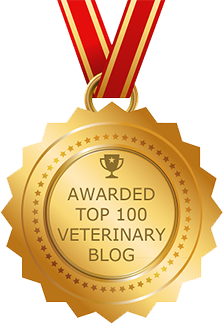How veterinary medicine prescribing and dispensing has changed in my lifetime
Prescribing medicines is essential to practice as a vet
As vets, one of our key powers is the ability to prescribe and dispense medicines. We are authorised to do this under the United Kingdom and European legislation. Without this capability, we would not be able to treat the sick animals under our care.
Strict rules govern how vets prescribe
Animal medicines are strictly regulated, and rightly so: if the wrong medicines were prescribed or dispensed, there could be serious adverse consequences, from treatment failure to toxicity. And important longer-term issues like antibiotic resistance can only be tackled by careful, well-informed use of the right antibiotic for the right situation.
In the past, prescribing rules were relaxed
Animal medicines have not always been so tightly controlled: during the span of my own career, over the past thirty years, there has been a significant increase in restrictions on how vets are authorised to provide treatment for animals.
Back in the 1980’s, vets were more-or-less allowed to buy and sell any products on the market to treat animals under our care. We could order the same range of drugs as human doctors, even sometimes using the same wholesalers that supply pharmacies. The signature of a vet was the same as the signature of a doctor in this regard. This gave vets (and pet owners) a great deal of flexibility. If a drug was available for humans, we could search through the literature, look for examples where it had been used in animals, work out an appropriate dose, then prescribe and dispense the drug for our patients.
This relaxed attitude still applies in some parts of the world. In the USA, for example, vets can even ask local compounding pharmacists to make up tablets, capsules or potions according to the vet’s wishes. At veterinary conferences in North America, there are numerous commercial stands where competing compounding pharmacists display their wares.
New legislation changed the way vets use medication across Europe
In the 1980’s, new laws began to change what vets were allowed to do. In some ways, these changes reflected the gradually improving appreciation of the importance of high clinical standards for pets. It was recognised that the ideal medicines for animals were those that had been individually assessed for safety and efficacy for a specific use in a particular type of animal. The older idea that a drug would “probably work well enough” was no longer acceptable.
It was recognised that medicines act in a species-specific way
The starting point for the changes in legislation was the fact that individual animal species have physiological differences from humans as well as from each other. These differences significant effect on the way the animal responds to medicines. It’s incorrect to assume that because a drug behaves a certain way in one species, it will do the same in another.
Animal medicines containing the same active ingredient as human medicines may appear almost identical, but they are often formulated differently. For example, for orally administered products like tablets and capsules, the formulation needs to ensure that the medicine is properly absorbed through the digestive system. There’s a great deal of difference in how the digestive processes work between animal species, as well as between animals and people. The stomach has different levels of acidity and there are different enzymes in the intestines. Using a medicine which is not authorized for animals increases the risk of treatment failure or harm to the treated animal.
New laws were brought in, at a European level, to control drugs more tightly, to reduce the risk of harm being caused by inappropriate medications being given to animals.
Specific licenses are needed for individual species and for particular purposes
Under the new system, manufacturers of veterinary medicines have to apply for specific licenses which prove safety, quality, and efficacy of their products when used in specific situations. Vets are no longer allowed to use the human equivalent drug if there is a veterinary version.
These changes were disliked by vets (and by pet owners) at first: the specific veterinary versions of many drugs were often more expensive than the human generic versions. The human drugs are produced in such high volumes that significant cost savings are possible during manufacture and distribution. The restriction of vets to animal-only products meant that pet owners had to start paying more money for medicines when their pets fell ill.
On first impressions, this seems unfair: surely if the label on a human drug shows that it has identical ingredients to the label on the animal drug, it should be just as effective, and if it’s cheaper, surely the owner should be able to avail of that saving?
There are serious legal implications for vets who break these rules
The new laws meant that it became an offense for vets to prescribe or dispense human medicines when there are licensed veterinary products. Vets can be fined and disciplined for doing so. This legislation protects animals, but there’s a financial cost to the owner for this extra level of care.
The cascade allows for situations where the right drug is not available in licensed form
The law does recognise that there are circumstances where the benefits of treatment of animals with "unauthorised medicines" outweigh the risks. This applies particularly where there are no veterinary authorised medicines for a rare condition. As a result, legislators have created a 'prescribing cascade', commonly referred to as ‘the cascade’, which allows vets to occasionally use particular products that are not specifically licensed for a particular condition, or for the species of animal they are treating. This exemption exists to help animal health and welfare in situations where there is no other alternative. In such situations, vets need to justify why they are using the unauthorised product, using facts that can be audited by inspectors if needed.
The cascade does not allow vets to use unlicensed drugs to save money
Cost cannot be used to justify using unauthorised drugs, which can be frustrating: a vet-licensed drug may cost twice as much as the human-licensed one, even though they may outwardly appear very similar. Vets are not allowed to use the cheap human version to save owners money.
The animal medicine laws are strict for a good reason: they prevent animals from suffering. For vets., it can be frustrating that we are not allowed to use human generic drugs when owners of pets under our care cannot afford the costly licensed versions. It can feel as if there are animal welfare reasons that should allow us to use the cheaper drug when the owner will not buy the expensive drug because they do not have the funds.
Could Brexit allow a review of the regulations?
As an older vet, I remember the unregulated days of my youthful prescribing with nostalgia. Yet I also accept that for animal care, the new rules have raised the bar, so that overall, the quality of medicines that animals receive now is significantly better.
There is one interesting point: much of the medicines legislation is inspired by Europe-based laws: could Brexit inspire a UK-based review of how vets are allowed to use drugs? Could we revert to a more flexible system, similar to that which applies in the USA?
Send your thoughts to marketing@recruit4vets.co.uk


